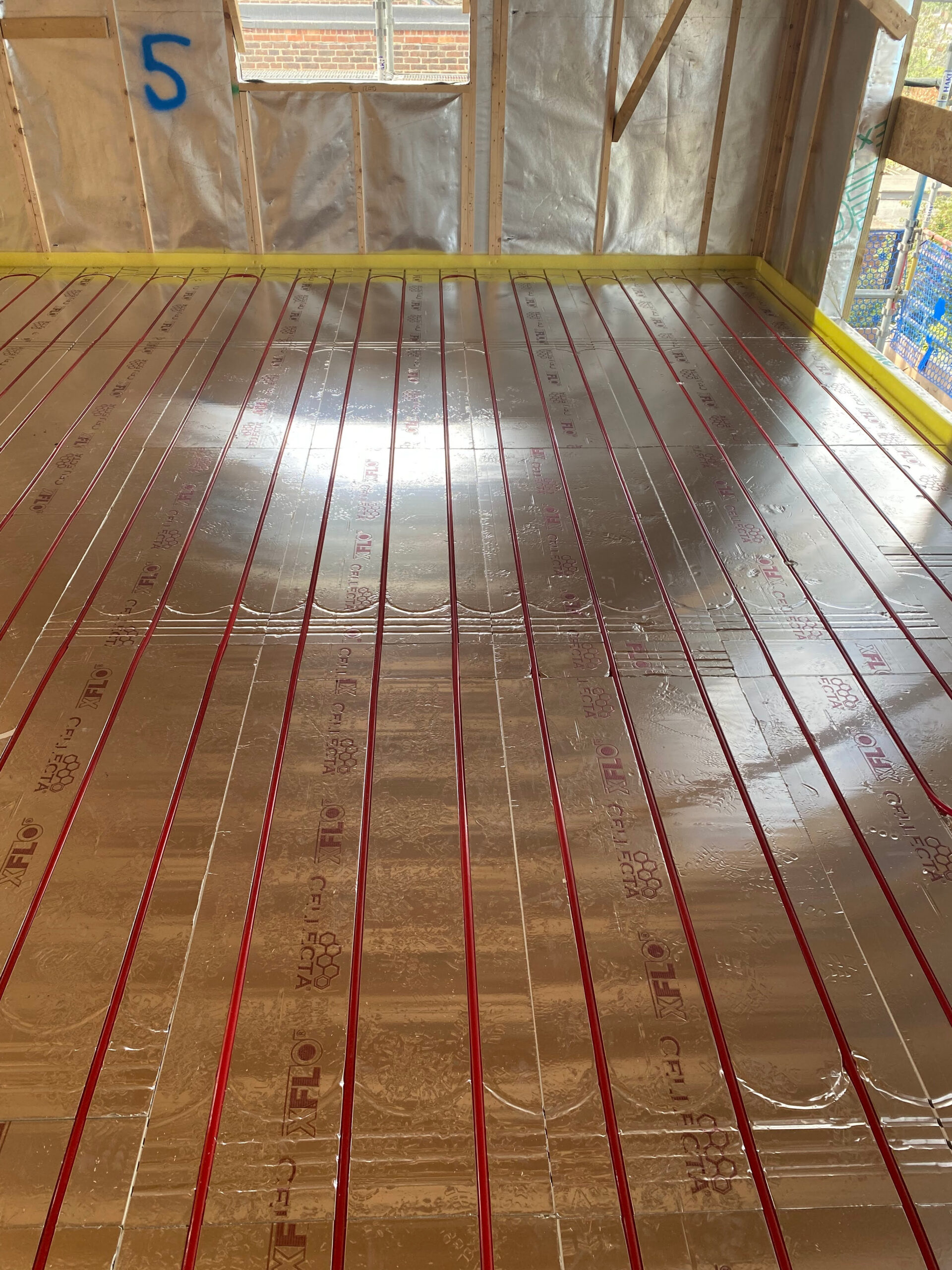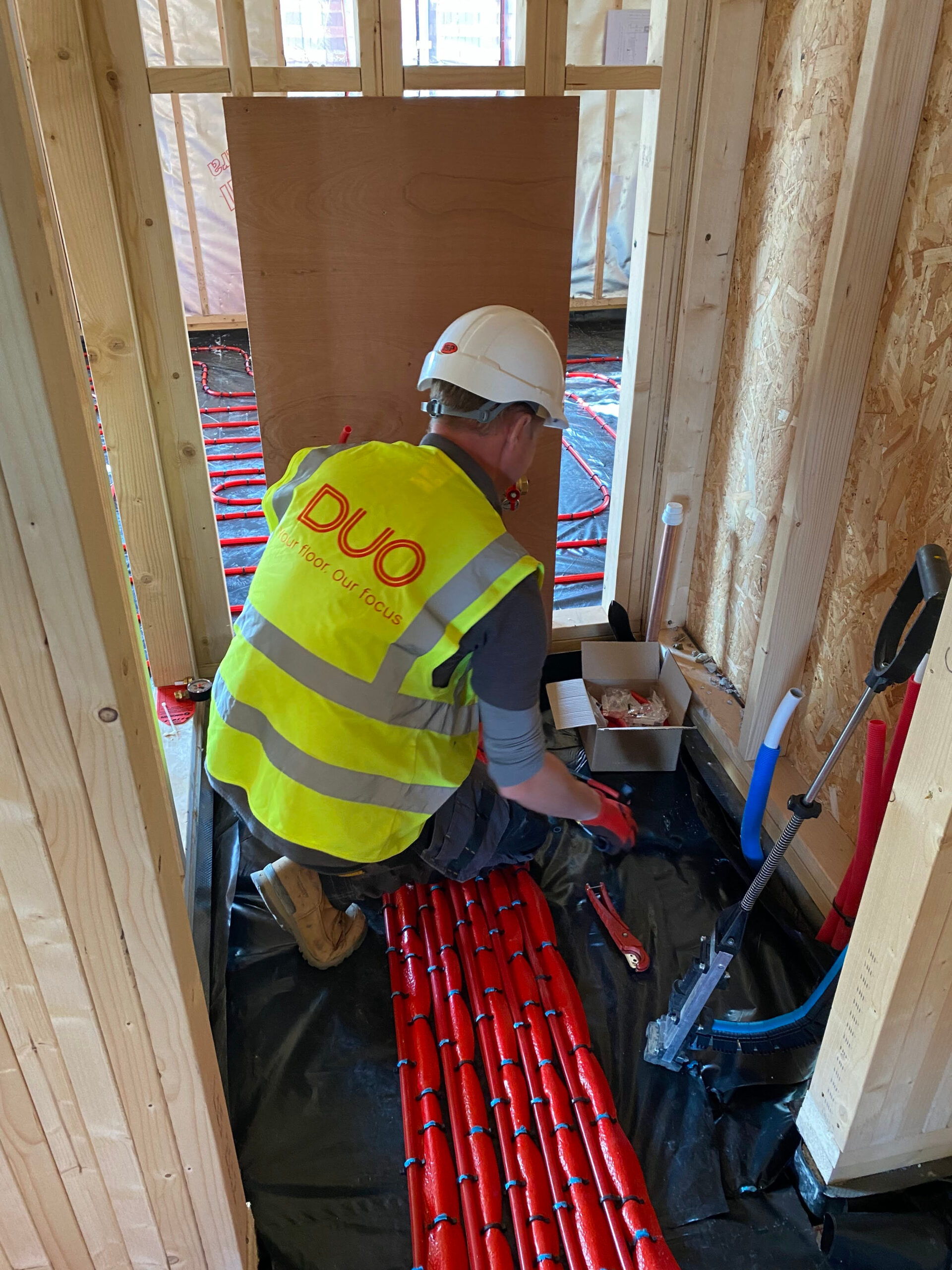Underfloor heating has become a popular choice for homeowners looking to achieve a comfortable and energy-efficient way to heat their spaces. When paired with wooden flooring, the result can be both stylish and practical. However, many people wonder whether underfloor heating with wooden floors is a safe and effective option. The good news is that it is entirely possible to combine the two, but it requires careful planning and the right materials to ensure optimal performance and longevity.
Wooden flooring, a natural and timeless material, offers aesthetic appeal and warmth underfoot, making it a great choice for modern homes. When combined with the consistent heat of an underfloor system, wooden floors can enhance the overall comfort of your home. However, it is essential to understand how heat affects wood, what types of wood are best suited for underfloor heating, and how to properly install and maintain the system.
This article will explore everything you need to know about using underfloor heating with wooden floors. From selecting the most compatible wood to addressing common concerns, such as warping and energy efficiency, we’ll cover key considerations to help you make an informed decision. We’ll also share practical tips on installation and maintenance to ensure your wooden flooring works harmoniously with your underfloor heating system.
Whether you’re planning a new build or upgrading your current heating setup, this guide will provide valuable insights into creating a cosy and stylish living space with underfloor heating and wooden floors. By the end of this article, you’ll have the confidence to embrace this pairing, knowing it is both practical and visually appealing.
Types Of Wood Suitable For Underfloor Heating
Choosing the right type of wood is one of the most critical decisions when planning underfloor heating with wooden floors. Not all wood is compatible with the heat produced by these systems, so understanding the properties of different materials will ensure both efficiency and longevity.
- Engineered Wood: Engineered wood is widely regarded as the best choice for underfloor heating systems. Unlike solid wood, engineered wood is constructed from multiple layers of timber bonded together. This layered structure makes it highly stable and resistant to the expansion and contraction caused by temperature changes. Engineered wood also allows heat to transfer efficiently through the flooring, providing consistent warmth throughout your space.
- Solid Wood: While solid wood can be used, it is less ideal for underfloor heating due to its natural tendency to expand and contract with changes in temperature and humidity. If you choose solid wood, opt for stable hardwoods like oak or ash. These types of wood are better at handling fluctuations in heat and are less likely to warp or crack. Thinner boards, ideally no thicker than 18mm, are recommended for better heat conduction.
- Laminate and Veneer Flooring: Laminate and veneer flooring options can also work well with underfloor heating. These materials are often engineered to withstand heat and are a more affordable alternative to solid or engineered wood. Ensure the laminate is specifically designed for use with underfloor heating, as some types may not handle prolonged exposure to heat.
Key Considerations
When selecting wood, prioritise low moisture content, as this reduces the risk of warping. Additionally, check with the manufacturer to confirm that the flooring is compatible with underfloor heating systems. Using a heat-resistant underlay is another crucial step, as it provides insulation and protects the flooring. Engineered wood is the top choice for combining underfloor heating with wooden floors, offering the perfect balance of durability, stability, and aesthetics. By selecting the right wood, you can create a stylish, warm, and energy-efficient space that meets your needs.

How Heat Affects Wooden Floors
When planning underfloor heating for wooden floors, understanding how heat impacts wood is essential to ensure the longevity and performance of your flooring. Wood is a natural material that responds to changes in temperature and humidity, so it’s crucial to manage these factors carefully.
- Expansion and Contraction: Wood naturally expands when exposed to heat and contracts when temperatures drop. This movement is more pronounced in solid wood compared to engineered wood. If not managed properly, it can lead to warping, cracking, or gaps in the floor. Engineered wood, with its layered construction, is designed to minimise these effects, making it the preferred choice for underfloor heating.
- Temperature Limits: Maintaining the correct temperature is key to protecting wooden floors. The surface temperature of the floor should not exceed 27°C. Higher temperatures can dry out the wood, causing it to shrink or crack over time. Most underfloor heating systems allow you to set precise temperature controls, ensuring the floor remains within safe limits.
- Humidity Levels: Humidity plays a significant role in the health of wooden floors. When paired with underfloor heating, it’s important to maintain a stable indoor humidity level between 45% and 65%. Low humidity can cause the wood to become brittle, while high humidity can lead to swelling. Using a humidifier during dry seasons can help maintain this balance.
- Proper Installation Practices: Correct installation techniques are essential for managing how heat affects wooden floors. Floating installations, where the wood is not glued or nailed down, allow for natural movement without causing damage. Additionally, using an underlay designed for underfloor heating can improve thermal efficiency and protect the flooring.
Preventative Measures
Regular maintenance, such as cleaning and monitoring the floor for signs of damage, helps to address potential issues early. Investing in high-quality materials and following manufacturer guidelines ensures that your wooden flooring remains beautiful and functional for years to come.
By understanding how heat affects wooden floors and taking preventative measures, you can enjoy the comfort of underfloor heating without compromising the quality or appearance of your flooring. This thoughtful approach ensures a warm and inviting space while preserving the durability of your wooden floors.
Installation Tips For Underfloor Heating With Wooden Floors
Installing underfloor heating for wooden floors requires careful planning to ensure the system works efficiently while protecting the flooring. Proper installation is crucial for achieving the perfect balance of warmth and durability, and it involves a series of well-thought-out steps.
- Prepare the Subfloor
A level and clean subfloor is essential for a successful installation. Any unevenness or debris can affect the heating system’s performance and potentially damage the wooden flooring. Ensure the subfloor is smooth and stable before proceeding. If necessary, use a levelling compound to create an even surface.
- Choose the Right Heating System
Select a heating system suitable for your needs. Electric underfloor heating is ideal for smaller spaces or retrofits, while water-based systems work best for larger areas or new builds. Consult with a professional to determine the most compatible option for your wooden flooring.
- Use a Heat-Resistant Underlay
Installing a heat-resistant underlay is critical. This layer improves heat distribution, enhances energy efficiency, and protects the wooden flooring from direct exposure to heat. Make sure the underlay is specifically designed for underfloor heating systems.
- Acclimate the Wood
Allow the wooden flooring to acclimate to the room’s temperature and humidity for at least 48 hours before installation. This step ensures the wood adjusts to its environment, reducing the risk of expansion or contraction once the heating system is in use.
- Install Temperature Sensors
Integrate temperature sensors into the system to monitor and control the floor’s surface temperature. These sensors help prevent overheating, ensuring the wooden flooring stays within the recommended limit of 27°C.
- Professional Installation
Hiring experienced professionals to install both the heating system and wooden flooring is highly recommended. Professionals have the expertise to ensure that the system is installed correctly, avoiding common mistakes that could lead to inefficiencies or damage.
By following these installation tips, you can ensure your underfloor heating system functions efficiently and complements your wooden flooring beautifully. A well-installed system provides consistent warmth and preserves the integrity of your flooring, offering a comfortable and stylish solution for your home.

Common Concerns About Underfloor Heating With Wooden Floors
When considering underfloor heating for wooden floors, homeowners often have several concerns about compatibility, performance, and maintenance. Addressing these common worries can help you make an informed decision and ensure that your system works effectively.
- Will Underfloor Heating Damage Wooden Floors?
A common concern is whether heat will damage wooden flooring. When the right materials are used, and the system is installed correctly, underfloor heating is perfectly safe for wooden floors. Engineered wood is the best option, as it is designed to handle the temperature fluctuations associated with underfloor heating. Additionally, maintaining the surface temperature below 27°C and ensuring proper installation can prevent damage such as warping or cracking.
- Is Underfloor Heating With Wooden Floors Energy-Efficient?
Yes, underfloor heating is highly energy-efficient when paired with wooden floors, especially engineered wood. Wooden floors allow for efficient heat transfer, and the even distribution of heat across the surface reduces the need for high operating temperatures. This efficiency helps lower energy costs while providing consistent warmth.
- Can Rugs Be Used With Underfloor Heating?
Rugs can pose a concern because they may trap heat, reducing the system’s efficiency and potentially causing uneven heating. If you plan to use rugs, opt for ones specifically designed for underfloor heating. Avoid thick or rubber-backed rugs, as these can insulate the heat and strain the system.
- How Do Humidity Levels Affect Wooden Floors?
Wood is sensitive to changes in humidity, and low levels can make the wood brittle, while high levels may cause swelling. Maintaining indoor humidity between 45% and 65% can help preserve the integrity of your wooden floors. Using a humidifier during dry months is a simple way to manage humidity levels.
- What Maintenance Is Required?
Maintenance for underfloor heating with wooden floors is straightforward. Regular cleaning, monitoring for signs of damage, and annual professional inspections will keep the system running smoothly. Addressing minor issues early prevents more significant problems and extends the lifespan of both the heating system and the flooring.
By addressing these concerns and taking appropriate precautions, you can confidently install underfloor heating for wooden floors, enjoying the benefits of warmth, energy efficiency, and timeless style.
Achieving Comfort And Style With Underfloor Heating And Wooden Floors
Combining underfloor heating with wooden floors is a fantastic way to create a warm, stylish, and energy-efficient home. By choosing the right type of wood, such as engineered wood, and following proper installation practices, you can enjoy the benefits of both systems without compromising their performance or durability. Understanding how heat affects wooden flooring and addressing common concerns ensures that your floors remain beautiful and functional for years to come.
Maintaining a consistent surface temperature, using a heat-resistant underlay, and managing humidity levels are crucial for the success of this pairing. Regular maintenance, including cleaning, monitoring for signs of damage, and scheduling professional inspections, will help extend the lifespan of your underfloor heating system and wooden flooring.
At Duo Systems, we specialise in installing underfloor heating solutions tailored to your needs. Our team ensures that your wooden flooring is paired seamlessly with the heating system, delivering consistent warmth and timeless style. Whether you’re upgrading your home or planning a new installation, we’re here to provide expert guidance and top-quality service.
If you’re ready to enhance your living space with the perfect combination of underfloor heating and wooden floors, contact us today. Call us now on 02380 675 888 for a consultation and take the first step towards creating a comfortable and stylish home. With Duo Systems, you can trust that your home is in expert hands.




